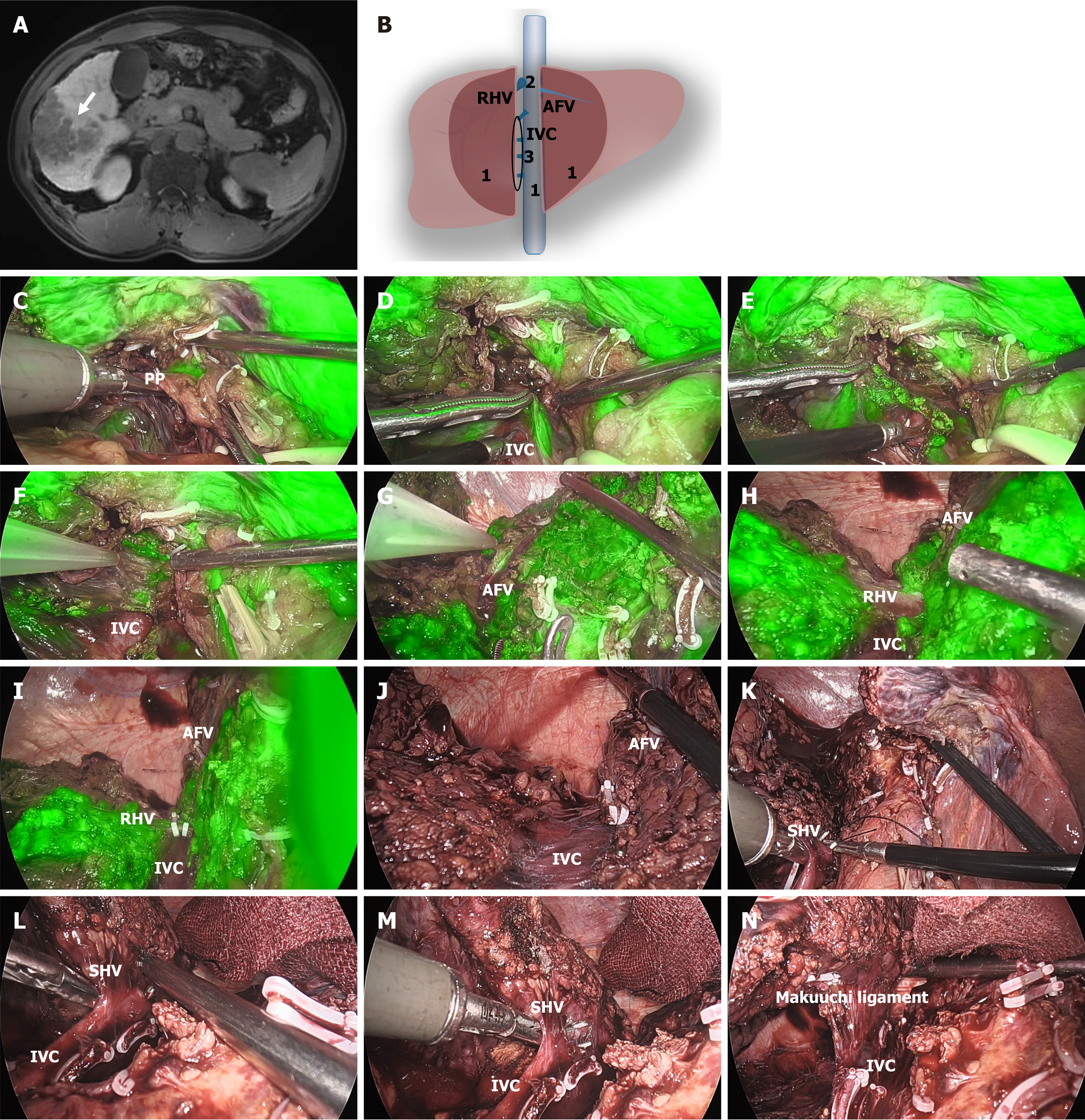Copyright
©The Author(s) 2025.
World J Gastroenterol. Jan 7, 2025; 31(1): 100750
Published online Jan 7, 2025. doi: 10.3748/wjg.v31.i1.100750
Published online Jan 7, 2025. doi: 10.3748/wjg.v31.i1.100750
Figure 6 Magnetic resonance imaging of the liver tumor and the surgical procedure of laparoscopic posterior and anterodorsal segment resection.
A: Magnetic resonance imaging of the liver tumor located on the posterior and anterodorsal segments (arrow); B: Schematic of the surgical procedure, with labels 1, 2, and 3 representing the different surgical steps; C: Transection of posterior pedicle; D: Blunt dissection for exposing the avascular area in the retrohepatic tunnel; E and F: Splitting the liver parenchyma on the surface of the inferior vena cava; G: Manifesting anterior fissure vein; H-J: Exposing and transecting the root of the right hepatic vein; K-M: Transection of short hepatic veins of the third hepatic hilum; N: Transection of Makuuchi ligament. RHV: Right hepatic vein; AFV: Anterior fissure vein; IVC: Inferior vena cava; PP: Posterior pedicle; SHV: Short hepatic vein.
- Citation: Huang K, Chen Z, Xiao H, Hu HY, Chen XY, Du CY, Lan X. Laparoscopic liver resection utilizing the ventral avascular area of the inferior vena cava: A retrospective cohort study. World J Gastroenterol 2025; 31(1): 100750
- URL: https://www.wjgnet.com/1007-9327/full/v31/i1/100750.htm
- DOI: https://dx.doi.org/10.3748/wjg.v31.i1.100750









